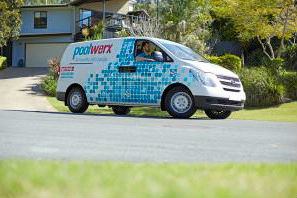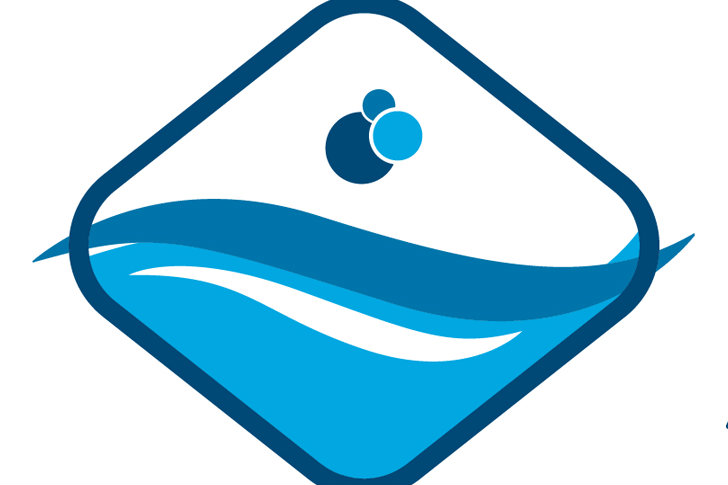There’s a house that would always catch the eye on the drive through Los Angeles’ iconic Sunset Boulevard toward the picturesque Pacific Coast Highway.
-
LA Service Firms Scramble After Wildfire Damage
Service companies continue to assess the damage of January’s wildfires in Southern California and their impact on business there.
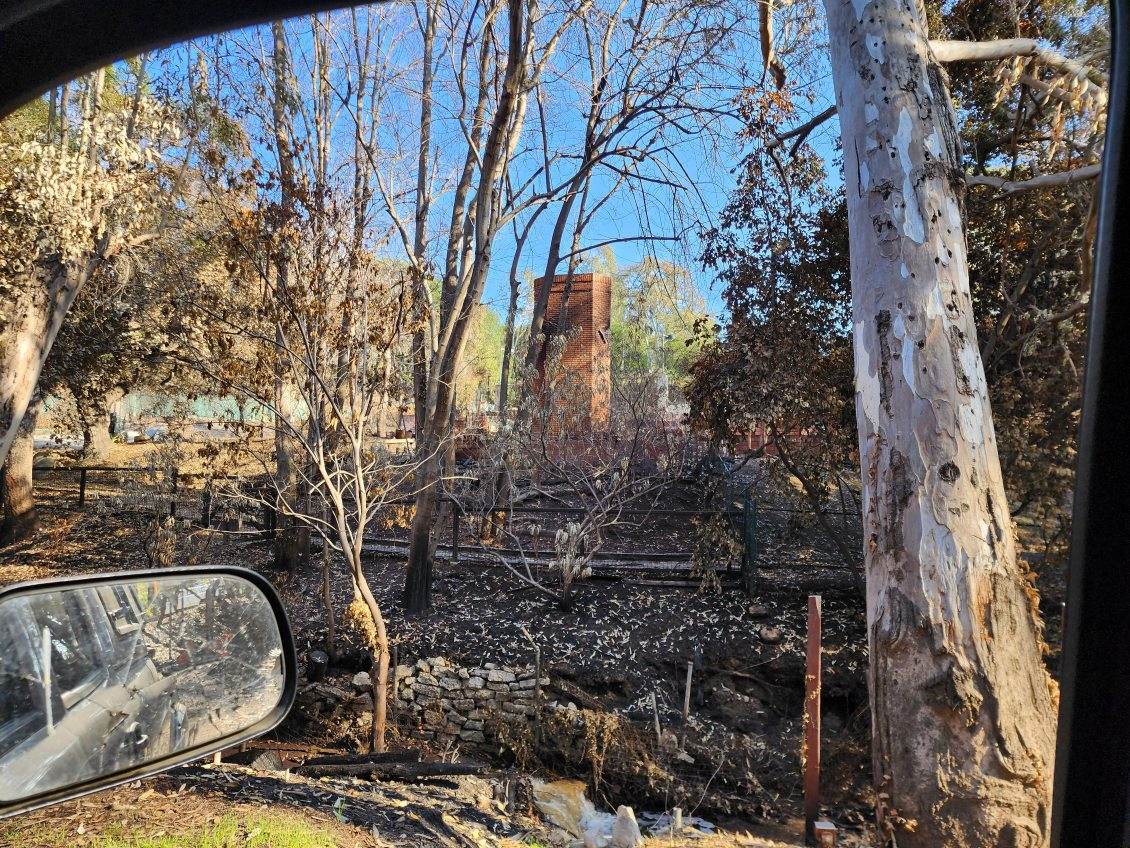
-
First Chaos Then Questions After the LA Fires
For weeks, service firms have scrambled to help customers save their pools. Now the industry wonders about the long-term effects of losing 15,000 homes.
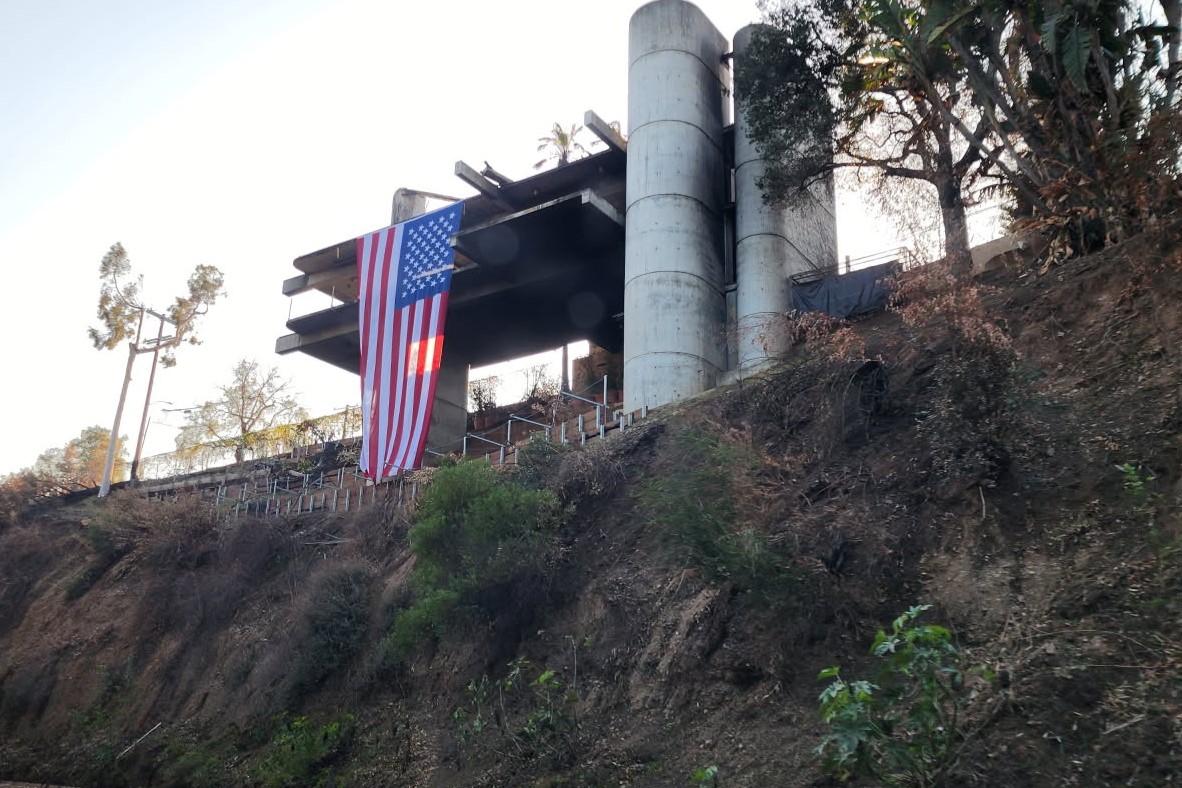
-
Pool/Spa Industry Pulls Together for Peers Hurt by Fires
PHTA set up a fund to help support those who took losses during January's massive wildfires in California.
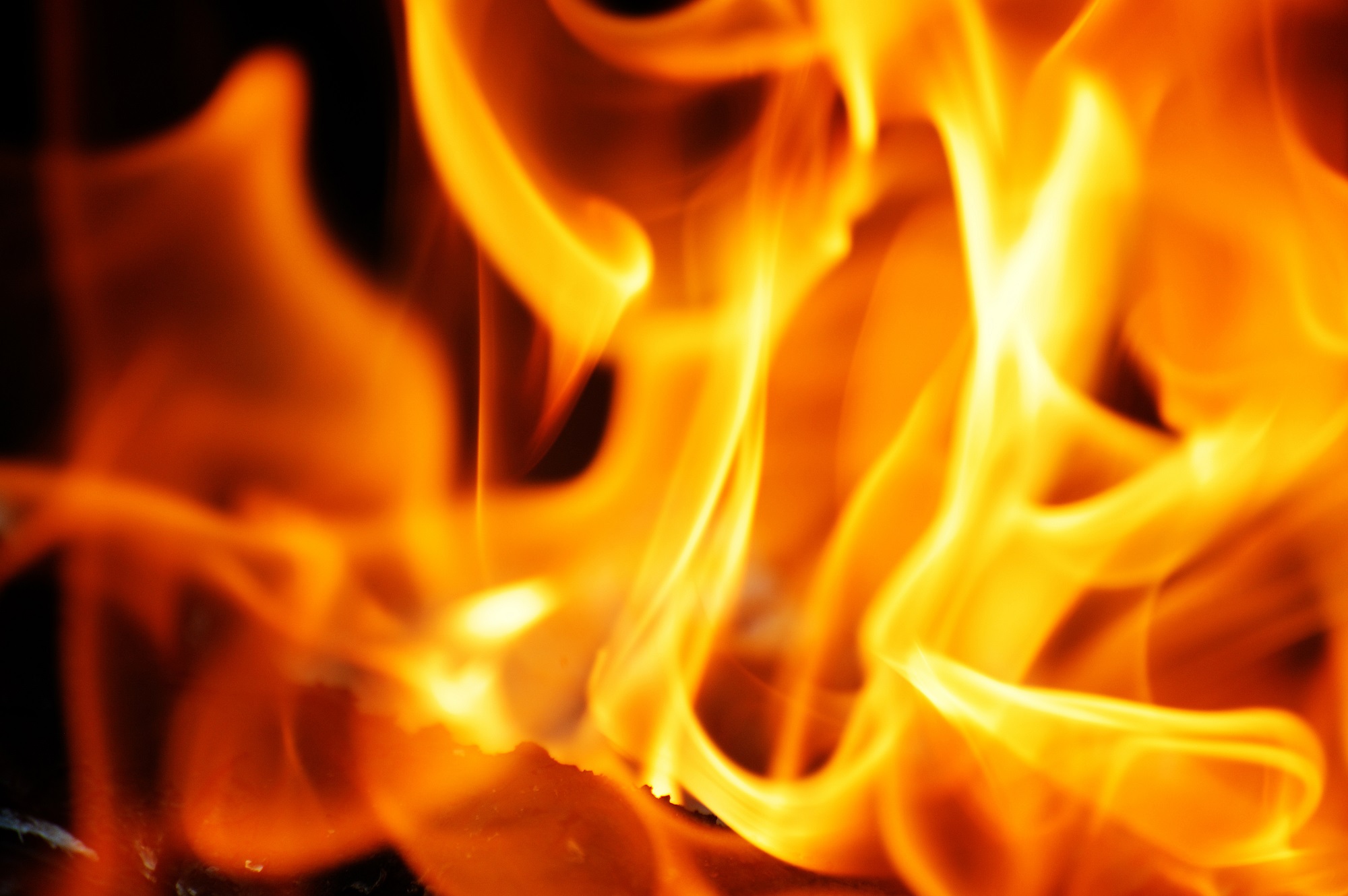
Called the Robert Bridges House, after its architect and owner, the modern marvel was suspended in the air, thanks to a massive exposed concrete support structure. From the street, you would see the bold foundation, vertically oriented wood cladding and the horizontal orientation of the home. Seeming to almost hover over the hills, it was at once stark and warm.
After January’s Pacific Palisades fires, what’s left of the residence attracts attention and awe for completely different reasons. With an American flag draped over the surviving concrete underpinning, it provides a reminder at once bleak and hopeful to those who pass it — including the contractors and other workers charged with clean-up.
Rich Gallo, CEO of Los Angeles-based Pure Swim, has seen the monument since the early days, as he and his team have worked to meet with customers and clean up pools deep in the Palisades.
“Seeing that flag draped over the home … It’s hard to unsee that,” Gallo says. “It’s reminiscent of the Pentagon from 9/11, which symbolizes that we’ve taken a hit and we’re down, but we’re going to come back …”
As these professionals work and wait to help their clients recover, they wonder how long it will take and what to expect.
Initial chaos
Coming into the area as soon as they could after the fires, service techs had to process not only the work they may have lost and the daunting task of remediating pools for those whose homes survived. They had to do this while absorbing the devastation and loss suffered by the residents.
“In the beginning — if you were able to get in — it was very eerie,” says Richard Okamoto, president of the Independent Pool and Spa Association’s Westside Chapter, which covers the Palisades area. “Especially as a service person, you go down these streets, taking the same route every week. So to drive through these areas that had complete destruction … it just felt like you’re driving in a scene out of a movie.”
And if you service several homes on one street, it especially became surreal. Eric Nielson, owner of Willow Creek Pools in West Hills, Calif., lost up to 22 pools.
“On one street we serviced about 10 pools, and seven of those houses are gone,” he said.
He saw a checkerboard effect where some homes survived but immediately neighboring abodes lie leveled. “It depended on the style — if they were more the Spanish style with tile roofs, they did a little better.” Those with plaster exteriors held up more, while those of predominantly wood roofs and construction did not fare well.
Pool/spa professionals did their work among the chaos of other parties, including the Army Corps of Engineers assessing the wreckage and removing hazardous materials.
“[My employees] are working tremendous hours, six to seven days a week, 12- to 15-hour days,” Gallo says. “They’re going into areas that are questionable. We take all the precautions, but it’s still nerve-wracking to go into neighborhoods where the neighbors aren’t allowed for safety reasons.”
As much as the hours, confusion, red tape and frustration, pool professionals are managing the exposure to such devastation.
“As a descent human being, you can’t be immune to what others are suffering from,” Gallo says. “It puts it in perspective that this is a major devastation, and there are many people who are suffering because they’ve lost everything.
“It gives you a whole different level of gratitude when you come home and take your key out of your pocket, put it through your door, and walk into your house. The first thing you realize is you have a door … and you have everything you need.”
Tallying the impact
The industry continues to assess the financial losses taken by the industry so far.
Anecdotally speaking, the number of companies that have suffered a catastrophic loss of business or whose owners lost their homes seems low. Most hear of five to 10 service companies who fall in that category.
“Then I would say hundreds have been impacted by the loss of a few pools here and there within their normal routes,” says Jarred Morgan, vice president of professional and ancillary products for Hasa. The chemical producer has been a major sponsor for the Pool & Hot Tub Alliance’s California Fire Relief Fund. It also had to evacuate briefly from its Valencia, Calif., headquarters during one of the fires.
Some companies may not have lost routes, but suffered deceptively significant setbacks, perhaps losing the trucks and tools that made work possible.
Even with these setbacks, service companies have had to move forward through the chaos and red tape, attempting to gain the required documentation to access clients’ properties. In the meantime, many unattended pools became veritable swamps. But, in many cases, officials don’t allow draining, especially amid concerns about the chemicals used in the flame retardants that were sprayed over the areas. And without electricity, the water can’t be easily circulated.
“So you have to treat things chemically, which creates a lot more demand and excess chemicals than normally necessary,” Morgan says.
The pools can’t be drained until it’s possible to refill, for fear they could pop out of the ground, Nielson adds. “It could be a function of drilling holes in the bottom of the pools to relieve pressure,” he says. “Then you don’t want standing water in the pool, so you don’t have mosquito issues.”
When pools are left unattended and untreated for a while, Nielson has tried to place temporary fencing around them as soon as he could access the property.
Eventually many of the pools will need draining, and officials are suggesting they might need to impose a schedule for doing so.
“You’re going to have everyone trying to drain at the same time,” Okamoto says. “I think they’re going to start limiting everyone on drains.”
Nielson is basing his expectations somewhat on past experience. Five years ago, he lost five houses in the Malibu fires.
“It took four months before they said go ahead and drain the water out,” he says. “The equipment’s gone; there’s no power; you have to bring in a generator or something to run a pump or filtration. So what do you do?”
He’s kept pools mosquito-free under such conditions for a year. “When there’s been no equipment, usually I have to bring in a pump to do some sort of filtration.”
Morgan reports an increase in demand for chlorine products, as well as muriatic acid, enzymes and chemicals used to fight phosphate. However, with the blazes and cleanup taking place so far ahead of the swim season, it hasn’t had an impact on availability. And considering this is a small area in the scope of the whole country, shortages are not expected, suppliers say.
Considering the future
While the service sector has suffered the most immediate impact, all in the area will likely experience effects to their year.
Fortunately, no retail location is known to have burned down. However, stores exist in or near some of the neighborhoods that were leveled. So the industry waits to see what happens to them over the long run: How will they generate business in neighborhoods that sit virtually abandoned for the time being?
The building sector also finds itself with a large question mark hovering over it. Some pool/spa builders know they’ve been hit significantly because they’ve lost projects at various stages in their progress.
“Nobody said ‘This is going to submarine me,’” says Robert R. Rankin, vice president-west for Heritage Pool Supply Group. “But some have said, ‘I only build 25 pools a year, five of them were in that market, and four of them are gone.’”
In an area where builders tend to produce volumes of dozens rather than hundreds or thousands, those losses become year-altering.
“California is not the place where you have a 2,000-pool-a-year builder,” Rankin says. “This is a state of boutique builders. If you’re building 50 pools and all of a sudden 30 are pulled out from under you, that’s going to impact your business.”
At least as daunting: They may find themselves hamstrung as they try to replace those lost projects and maintain decent numbers for the year. These builders have lost a substantial portion of their target market.
“A lot of builders are [saying], ‘A lot of zip codes just got knocked out of my line of sight, so how do I pivot out of the market,’” Rankin says.
While the industry doesn’t have hard data on the number of pools lost, all indications place it in the thousands. The two major fires affected high-end areas, especially in the Palisades, which counts the ultra-wealthy among its residents. Of the approximately 15,000 homes lost, many in the industry estimates that 8,000 had pools, Rankin said. But he believes it could reach closer to 10,000.
From talking to their clients, service techs are confident that the owners of these homes will want their pools back.
“It sounds like yes they all want a pool still, they want to redo it, but … it feels like that’s going to be their last step,” Okamoto says.
At that point, Gallo expects to see COVID-era activity. “It’ll be a boom for anybody who’s licensed for California state,” he says. “Los Angeles won’t let them on site unless they have a Contractor State License Board license.”
But nobody knows when that will be, as it will depend on the decisions and actions of several external forces, including insurance companies, federal officials, local health officials and building departments.
And, given the financial hit the homeowners have sustained, it isn’t known how much they’ll be able to spend on their remodels and replacements.
“These homeowners are going to be in a different economy themselves than the rest of the city, state and country,” Gallo says. “It’s going to be a major adjustment for a lot of homeowners, and a lot of them will be extremely cautious on what they’re going to be spending on.”

